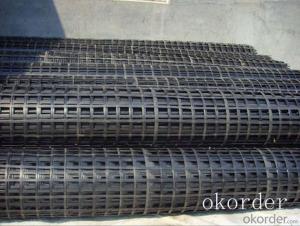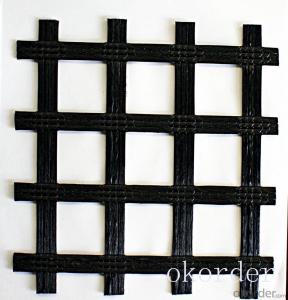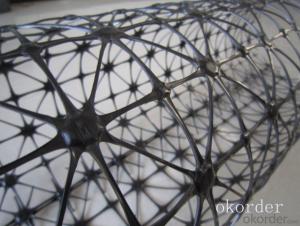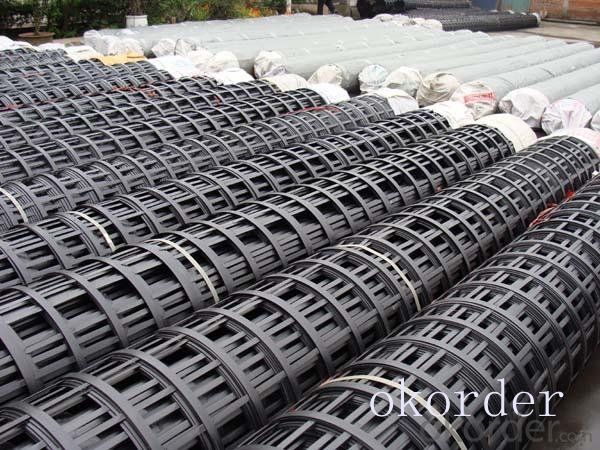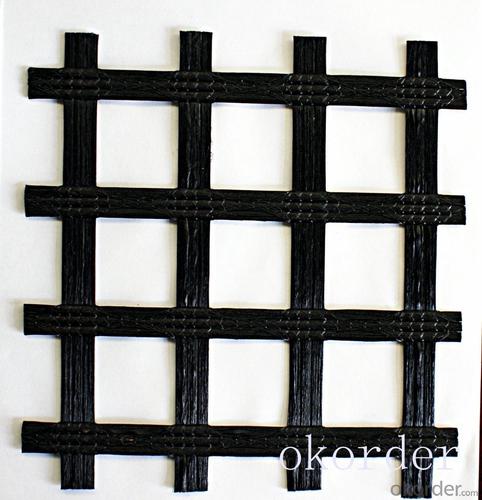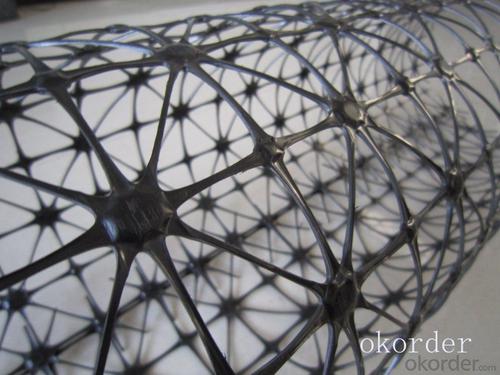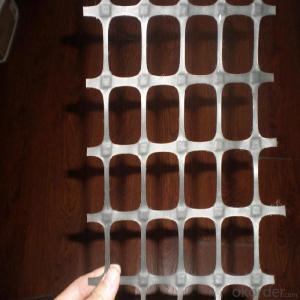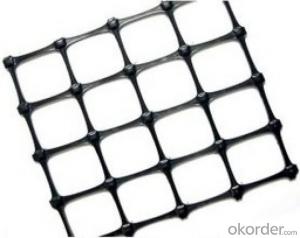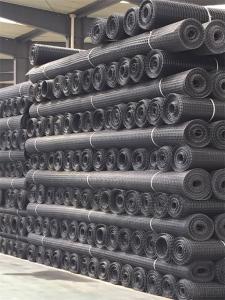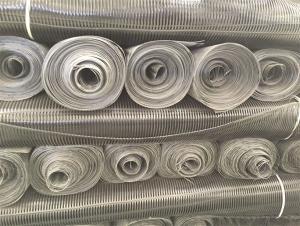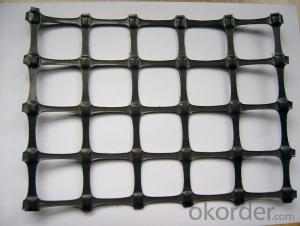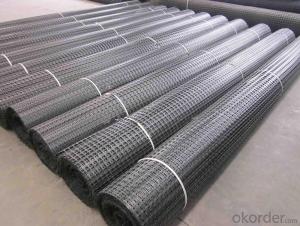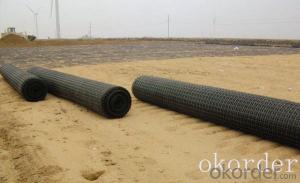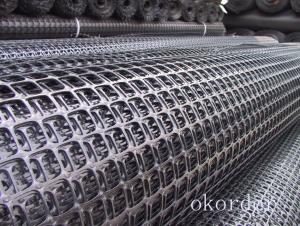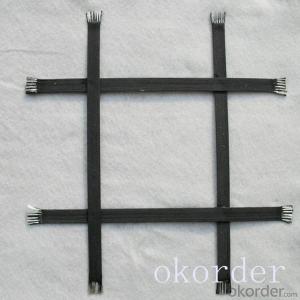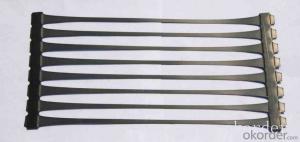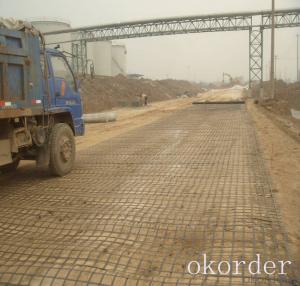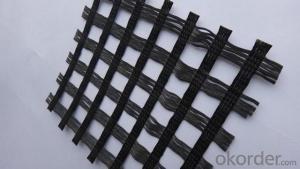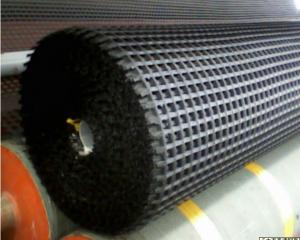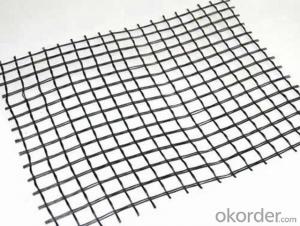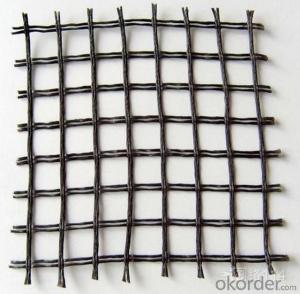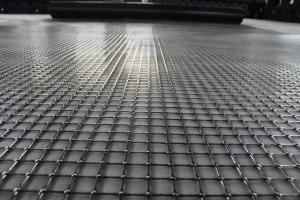Miragrid Gx High Polyethylene Geogrids Made in China
- Loading Port:
- China main port
- Payment Terms:
- TT OR LC
- Min Order Qty:
- 1000 m²
- Supply Capability:
- 1000000 m²/month
OKorder Service Pledge
OKorder Financial Service
You Might Also Like
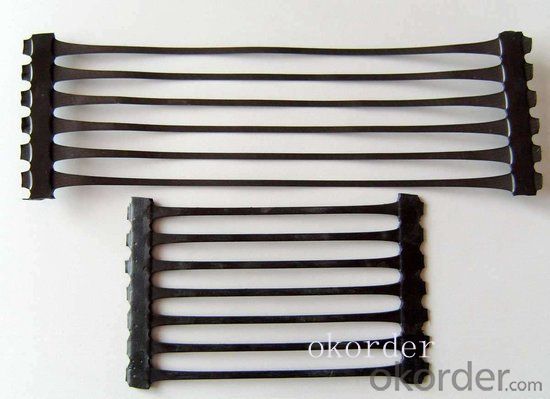
Product Introduction
Type:
Geogrids
Place of Origin:
Anhui, China (Mainland)
Brand Name:
CMAX
Model Number:
Biaxial
type specification
glass fiber geogrid
25X25,30X30,40X40,50X50,60X60,70X70,80X80,90X90,
100X100,110X110,120X120KN
PET geogrid
15X15,20X20,25X25,30X30,35X35,40X40,50X50,60X60.
70X70,80X80,90X90,100X100,110X110KN
steel-plastic composite geogrid
20X20,30X30,40X40,50X50,60X60,70X70,80X80,90X90,
100X100KN
PP geogrid
20X20,30X30,40X40,50X50,60X60,70X70,80X80,90X90,
100X100,110x110KN
Geogrid protects channel slopes, provides resistance and stability, protecting this object from erosion. Additional advantage is drainage along channels. Geogrid application considerably reduces losses, connected with fall of ground, landslides and deformation of slopes.
Our Service
1.On a regular basis or as per your request,we entrust national testing agencies to conduct quality inspections
2. Strictly in accordance with the ISO9001-2008 international quality system standard,we monitor and manage the whole process throughout production,quality testing,and measurement to ensure product quality
3. For quality-related construction delay or substandard construction(except for damage or losses due to customer’s responsibility or irresistible natural disasters),we have refunding,replacement,and repair services.We will respond to customers’ feedbacks on quality issues within 24 hours.
Packaging & Shipping
Packing: PLASTIC FILM INSIDE, AND WOVEN BAG OUTSIDE
Shipping: About 15 days after receipt the deposit
FAQ:
Q: What kind of payments does jenor support?
A: T/T, L/C, Cash are accepted.
Q: Do you charge for the samples?
A: Accordeing to our company policy, the samples are free, we only charge the freight fee. And we will return the freight fee during the next order.
Q: Can you produce according to customers' design?
A: Sure, we are professional manufacturer, OEM and ODM are both welcome.
Q: Do you have other products?
A: Yes, please check the pictures:
- Q: Classification and characteristics of geogrids
- Characteristics of glass fiber geogrid:1, high tensile strength, low elongation - fiberglass geogrid with glass fiber as raw material, has a high resistance to deformation, fracture elongation rate of less than 3%.2, no long-term creep as reinforcing material, have in long-term load under the condition of deformation resistance that the creep resistance is extremely important, glass fiber does not creep, which ensure product can maintain long-term performance.3, thermal stability - the melting temperature of glass fiber above 1000 degrees Celsius, which ensures that the fiberglass geogrid in paving operations to withstand the heat stability.4, mixed with asphalt compatible materials - glass fiber geogrid treatment process after coating is designed for asphalt mixture, every fiber is fully coated with high compatibility with asphalt, so as to ensure that the glass fiber geogrid in the asphalt layer and not in isolation of asphalt mixture but, firmly together.5, physical and chemical stability, through special postprocessing agent coating, glass fiber geogrid can resist all kinds of physical and chemical erosion wear, can resist biological erosion and climate change, ensure that its performance is not affected.6, lock and limit the aggregate because of glass fiber geogrid is mesh structure, aggregate in asphalt concrete can be run through them, thus forming a mechanical interlock. This restriction hinders the movement of aggregates, so that the asphalt mixture in the case of load can achieve better compaction state, higher load capacity, better load transfer performance and smaller deformation.
- Q: Are geogrids resistant to UV radiation?
- Yes, geogrids are typically designed to be resistant to UV radiation.
- Q: We would like to change the geogrid reinforced geogrid, I do not know what the reason for change is more reasonable
- Because the height of the geocell is very obvious, and the welding torch is very long, and the geogrid is very different
- Q: What is the price of 50kN two-way geogrid
- There are several kinds of 50KN two-way grille
- Q: Can geogrids be used for load distribution?
- Yes, geogrids can be used for load distribution. Geogrids are synthetic materials that are used in a variety of civil engineering applications to reinforce soil and distribute loads. They are commonly used in road construction, retaining walls, and slope stabilization projects to enhance the structural integrity of the soil and spread the load more evenly.
- Q: What is the difference between Geogrid TGSG and GSL?
- TGSG is the national standard GB/T17689-2008 double plastic geogrid code
- Q: How do geogrids help in reducing the risk of slope instability?
- Geogrids help in reducing the risk of slope instability by reinforcing the soil and providing additional strength to the slope. They act as a stabilizing agent by increasing the soil's shear resistance and preventing it from sliding or collapsing. This reinforcement helps in distributing the forces exerted on the slope, reducing the potential for slope failure and improving overall stability.
- Q: Can geogrids be used in soil stabilization for erosion control?
- Yes, geogrids can be effectively used in soil stabilization for erosion control. Geogrids are synthetic materials that are commonly placed within the soil to enhance its stability and prevent erosion. They provide reinforcement and structural support to the soil, reducing its susceptibility to erosion caused by water or wind. By improving the soil's strength and preventing movement, geogrids help to stabilize slopes, embankments, and other areas prone to erosion, making them an ideal solution for erosion control in soil stabilization projects.
- Q: The future of geotechnical materials
- Glass fiber geogridGlass fiber geogrid is glass fiber as the material, the reticular structure material of the knitting process, for the protection of glass fiber, improve the overall performance, the highway reinforced material through a special coating treatment process and the.
- Q: What are the advantages of using geogrids in ground improvement for load transfer platforms?
- Geogrids offer several advantages in ground improvement for load transfer platforms. Firstly, they enhance soil stability by reinforcing the ground, thereby increasing its load-bearing capacity. This allows for the construction of larger and more robust load transfer platforms, capable of supporting heavy loads. Additionally, geogrids help to distribute the load more evenly across the platform, reducing the risk of localized failures or settlements. Moreover, these geosynthetic materials are durable and resistant to degradation, ensuring the longevity and effectiveness of the ground improvement solution. Overall, geogrids provide a cost-effective and efficient method for strengthening and stabilizing the soil, resulting in improved performance and safety of load transfer platforms.
Send your message to us
Miragrid Gx High Polyethylene Geogrids Made in China
- Loading Port:
- China main port
- Payment Terms:
- TT OR LC
- Min Order Qty:
- 1000 m²
- Supply Capability:
- 1000000 m²/month
OKorder Service Pledge
OKorder Financial Service
Similar products
Hot products
Hot Searches
Related keywords
